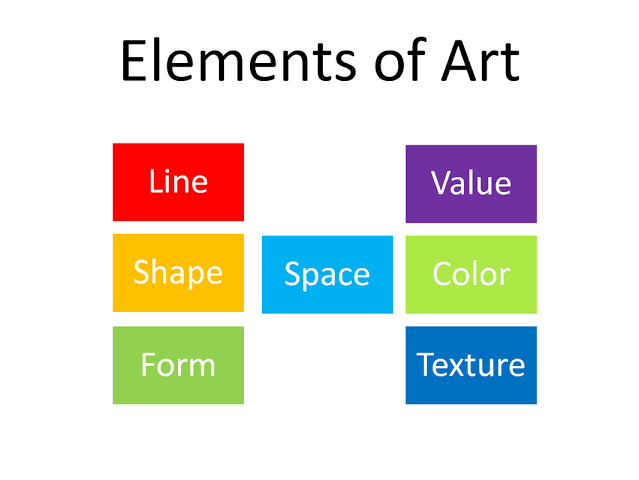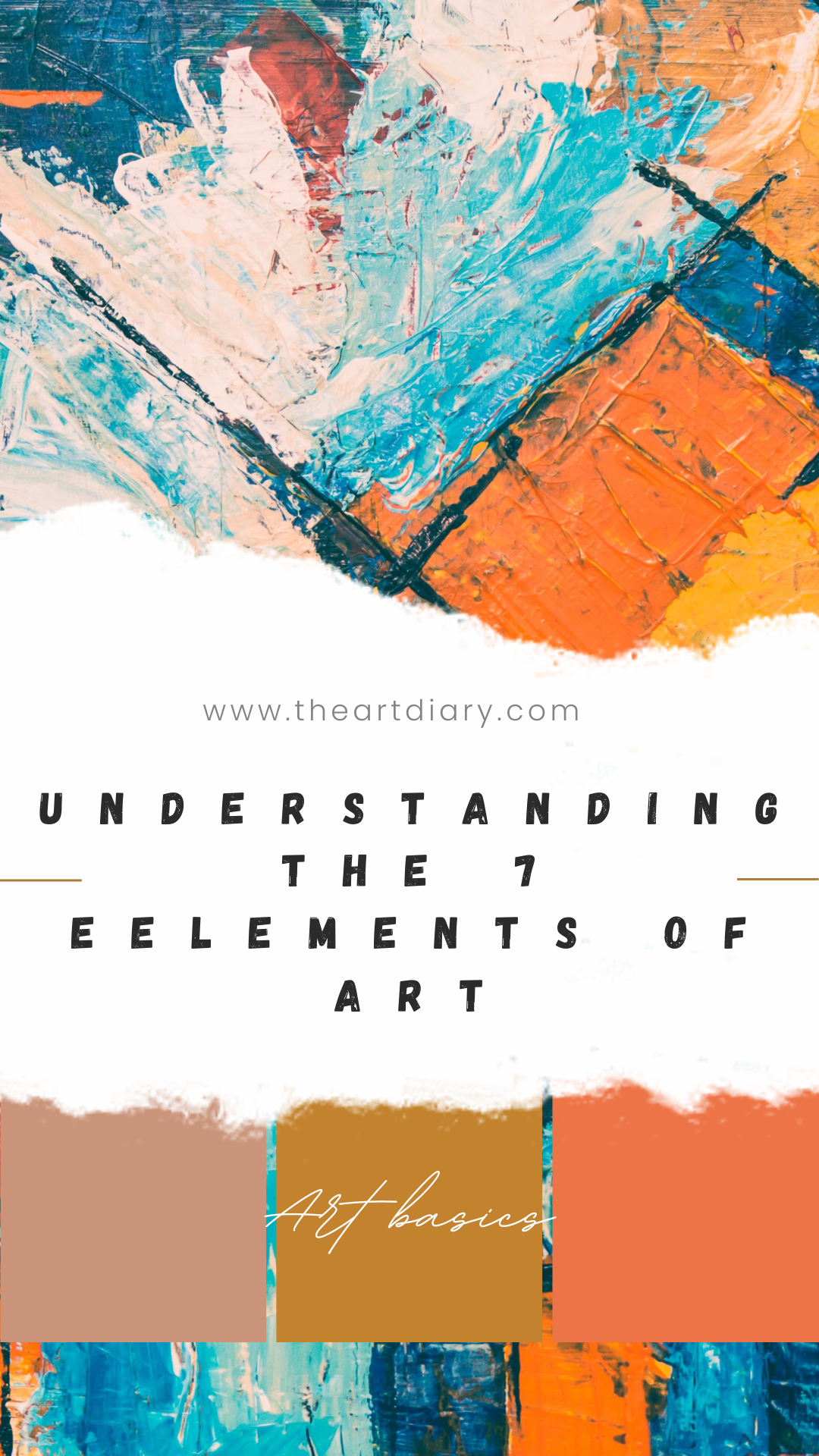Introduction
Art is a universal language that speaks to the soul, transcending cultural barriers and resonating with emotions. Behind every stroke of the brush, every sculpted form, and every composed image lies a set of fundamental elements that form the backbone of creative expression.
These seven elements of art—line, shape, form, color, value, texture, and space—serve as the artist’s toolkit, allowing them to craft visual narratives that captivate and inspire. Let’s delve into the intricacies of each element to unravel the essence of artistic creation.
Check out this seven elements of art chart:
Let’s discuss these 7 elements of art one by one:
Line
Lines are the building blocks of visual art. They can be straight or curved, continuous or broken, thick or thin. Lines guide the viewer’s eye, define shapes, and convey movement. From the bold strokes of a calligraphy pen to the delicate lines in a sketch, artists use lines to establish structure, create patterns, and evoke emotion within their compositions.
Shape
Shapes are formed when lines enclose space. These shapes can vary from geometric to organic and simple to complex. Artists utilize shapes to compose images, establish patterns, and create visual balance. Whether exploring the symmetry of a triangle or the flowing curves of a circle, the manipulation of shapes is fundamental to constructing the visual language of art.
Form
Form adds depth and dimension to shapes, transforming two-dimensional images into three-dimensional sculptures or realistic portrayals. Artists employ techniques such as shading and perspective to create the illusion of volume and mass. Form brings life to sculptures, paintings, and drawings, allowing viewers to perceive a sense of physical presence within the artwork.
Color
Color is a vibrant and emotive element that plays a crucial role in conveying mood and atmosphere. Artists harness the color wheel to create harmonies, contrasts, and focal points within their compositions. From the warm glow of reds and yellows to the cool serenity of blues and greens, color choices wield the power to evoke a range of emotions and enrich the visual experience.
Value
Value refers to the lightness or darkness of a color. Artists manipulate value through shading and highlighting, adding depth and contrast to their work. Understanding value is essential for creating realistic depictions and establishing visual hierarchy within a composition. It is through the careful consideration of light and shadow that artists breathe life into their creations.
Texture
Texture engages the viewer’s sense of touch, even within a visual medium. Artists employ various techniques to simulate the tactile qualities of different surfaces. Whether conveying the smoothness of glass, the roughness of bark, or the softness of fabric, texture adds a tactile dimension to art, inviting viewers to visually explore the surface of the artwork.
Space
Space in art is not merely the absence of matter but the area around, between, and within objects. Artists manipulate positive and negative space to create balance, depth, and perspective. The careful consideration of spatial relationships guides the viewer’s gaze through the composition, creating a dynamic and immersive visual experience.
Conclusion
In the tapestry of art, the seven elements—line, shape, form, color, value, texture, and space—weave together to create a symphony of visual expression. Whether you are an art enthusiast appreciating the nuances of a masterpiece or an aspiring creator seeking to understand the intricacies of the craft, a deeper exploration of these elements unveils the essence of artistic creation and the boundless possibilities within the realm of visual storytelling.


